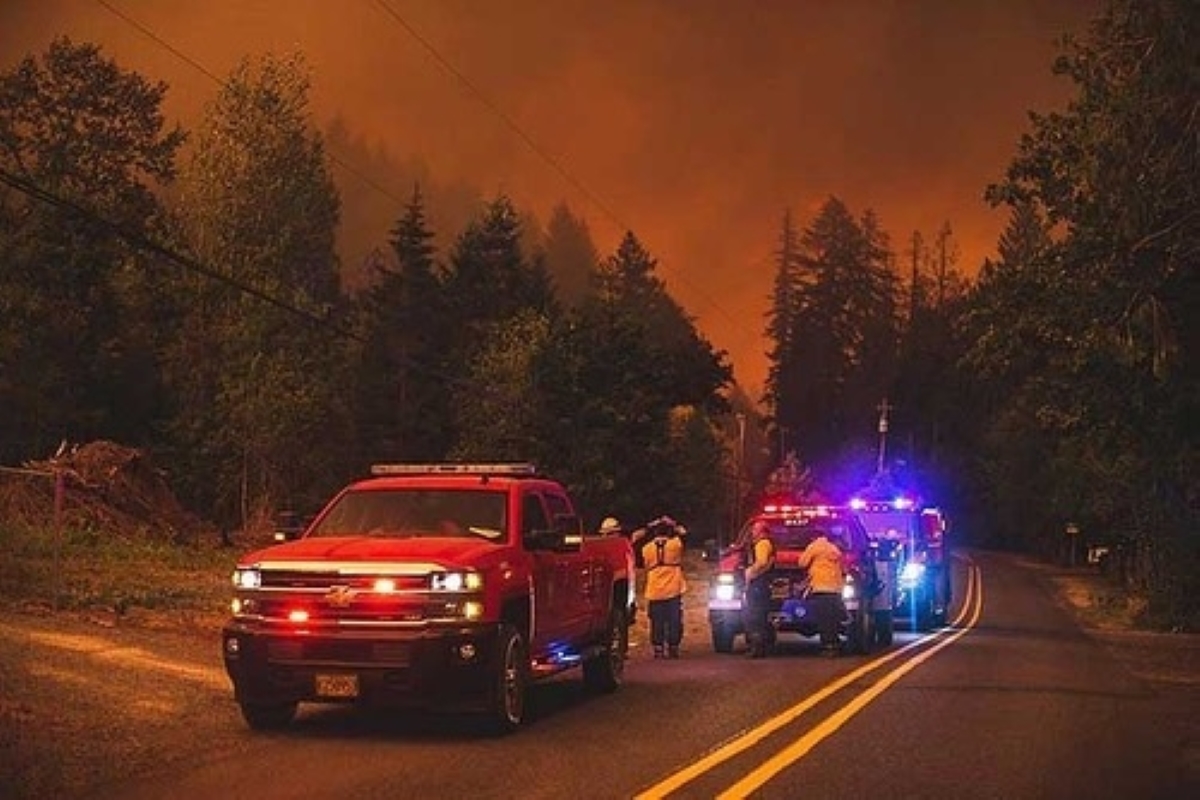Two industrial plants gutted in fire
A devastating fire broke out at two separate locations in East Burdwan last night. In one incident, four individuals, including the owner, sustained burn injuries and were rushed to hospital.
Oregon Gov. Kate Brown invoked the Emergency Conflagration Act to mobilize more firefighters and equipment to help fight that fire.
SNS | SAN FRANCISCO | July 18, 2021 11:24 am

IANS
The Tamarack Fire, which was sparked by lightning on 4 July, exploded overnight and was over 82 sq km as of Saturday evening, according to the Humboldt-Toiyabe National Forest.
The blaze was threatening Markleeville, a small town close to the California-Nevada state line and has destroyed at least three structures, authorities said, and was burning toward the Alpine County Airport after jumping a highway.
Advertisement
A notice posted on the 165 km Death Ride’s website said several communities in the area had been evacuated and ordered all riders to clear the area. The fire left thousands of bikers and spectators stranded in the small town and racing to get out.
Advertisement
Kelli Pennington and her family were camping near the town Friday so her husband could participate in his ninth ride when they were told to leave. They had been watching smoke develop over the course of the day, but were caught off guard by the fire’s quick spread.
Afternoon winds blowing at 32 to 48 kmph fanned the flames as they chewed through bone-dry timber and brush. Meteorologists predicted critically dangerous fire weather through at least Monday in both California and southern Oregon, where the largest wildfire in the U.S. continued to race through bone-dry forests.
The Bootleg Fire was still burning rapidly and dangerously along its southern and eastern flanks, however, and authorities expanded evacuations in a largely rural area of lakes and wildlife refuges.
The fire is now 1,137 sq km in size, or more than 100 square miles larger than the area of New York City.
“This fire is large and moving so fast, every day it progresses 4 to 5 miles,” said Incident Commander Joe Hassel. “One of the many challenges that our firefighters face every day is working in new country that can present new hazards all the time.”
Extremely dry conditions and heat waves tied to climate change have swept the region, making wildfires harder to fight.
In southern Oregon, fire crews have dealt with dangerous and extreme fire conditions, including massive “fire clouds” that rise up to 10 km above the blaze. The Bootleg Fire has destroyed at least 67 homes and 117 outbuildings.
The conflagration has forced 2,000 people to evacuate and is threatening 5,000 buildings, including homes and smaller structures in a rural area just north of the California border.
The Tamarack Fire sent heavy smoke over Lake Tahoe and into Nevada.
The National Weather Service warned of possible thunderstorms stretching from the California coast to northern Montana on Sunday and that “new lightning ignitions” are likely because of extremely dry fuels across the West.
Firefighters said in July they were facing conditions more typical of late summer or fall.
The fires were just two of numerous fires burning across the drought-stricken U.S. West, as new fires popped up or grew rapidly in Oregon and California.
There were 70 active large fires and complexes of multiple fires that have burned nearly 4,297 sq km in the U.S., the National Interagency Fire Center said. The US Forest Service said at least 16 major fires were burning in the Pacific Northwest alone.
A fire in the mountains of northeast Oregon was also growing rapidly and was 44 sq km in size on Saturday.
Oregon Gov. Kate Brown invoked the Emergency Conflagration Act to mobilize more firefighters and equipment to help fight that fire.
Officials ordered the evacuation of a wilderness recreation area and kept in place a warning for residents of the tiny communities of Pulga and east Concow to be ready to leave.
Advertisement
A devastating fire broke out at two separate locations in East Burdwan last night. In one incident, four individuals, including the owner, sustained burn injuries and were rushed to hospital.
More than 200 protesters clashed with National Guard troops in downtown Los Angeles during the latest demonstrations against immigration raids that swept across California over the weekend.
A fire that originated from one of the rooms of the Revenue Building at ITO, Center Delhi, the Delhi Fire Services (DFS) said on Friday. However, no casualties were reported in the incident.
Advertisement
